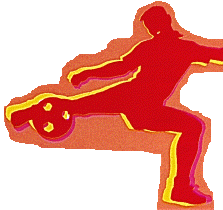| HOMEPAGE | WHO'S MAKING WHAT? | CONTENTS |
 |
||
| HOMEPAGE | WHO'S MAKING WHAT? | CONTENTS |
 |
||
It was the genesis of the tarento, the high-octane-ego foreign pop-ups who dominated TV for two decades, perpetuating an image of foreigners as sideshow freaks. Sadly, wrinkles on most of these silly folk are taking their toll and they can only be found on late-night NHK shows wearing a suit from Frederick's of Hollywood and talking about their favorite Hungarian musicals. It is very possible that they will soon be history.
Before we relegate them to the tar pit, however, be advised that some things haven't changed. Their TV appearances have done their job, giving them the profile needed to bag the real money--the fees for appearing at local meets and conventions so crushingly boring that listening to the likes of Dave and Kent and Agnes is a pleasure.
A reliable source tells us that 90-minute appearances start at Y400,000 and run to well over Y1 million. What's more, honoraria often come in cash . . . so who needs to know? Stick to your knitting in this line and a million bucks a year is a cinch.
If the tarento are en route to oblivion, the sumo rikishi are here to stay. They've certainly earned the right, working their way up through the tough stable world and integrating to a degree that would send weaker foreigners running for the Skyliner. And for what reward?
 In 1993, Akebono pulled down Y89.17 million. But in the dohyo you can't
just show up for that kind of money, you have to win. It took the powerful
Hawaiian four basho victories in one season to make quadruple his Y22.8
million base salary. (That's almost double what the top-ranking foreign
rikishi, Konishiki, was making in 1991.) On the other hand, who knows the
total value of all those envelopes people stuff in your yukata just for joining
their table? Rumor has it just one can hold up to Y2 million.
In 1993, Akebono pulled down Y89.17 million. But in the dohyo you can't
just show up for that kind of money, you have to win. It took the powerful
Hawaiian four basho victories in one season to make quadruple his Y22.8
million base salary. (That's almost double what the top-ranking foreign
rikishi, Konishiki, was making in 1991.) On the other hand, who knows the
total value of all those envelopes people stuff in your yukata just for joining
their table? Rumor has it just one can hold up to Y2 million.
In baseball, the deal is much sweeter if you've got the goods when you sign. You don't have to wash your team-mates butts like novice sumotori do and there's other leagues to huff off to if they ever try making you. And if you're Shane Mack, playing center field for the Giants, you catch Y405 million for two years in a row. We reported the 1991 Giant-helper Phil Bradley made Y297 million per year.
All these big money, high profile jobs are the preserve of Tokyo's top gaijin caste--and Americans dominate almost every slot. So it's good to see Japan leveling the field by taking up soccer, a sport Yanks don't play. Top of the heap is a Brazilian, Verdy's Ruy Ramos who reportedly scores Y160 million per season.